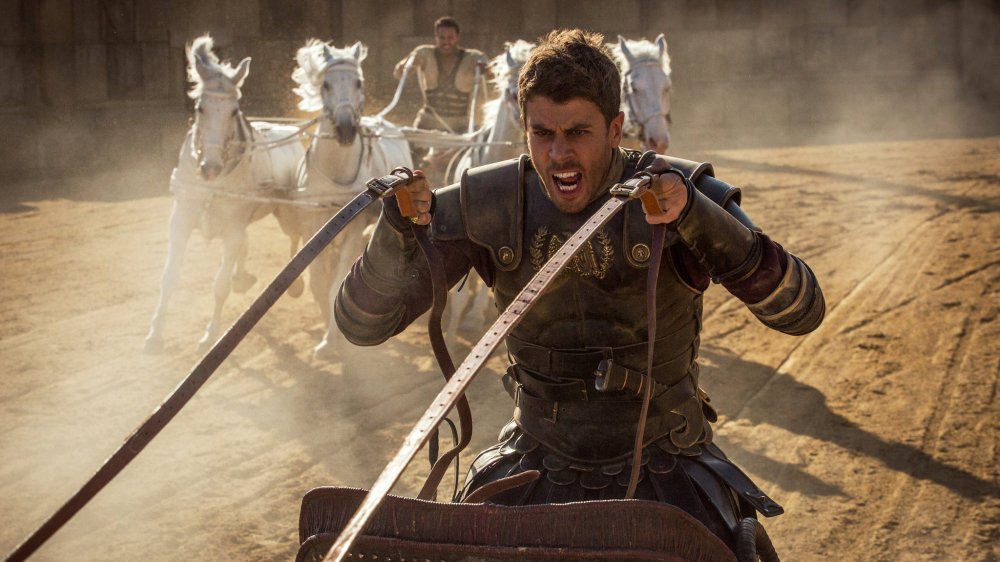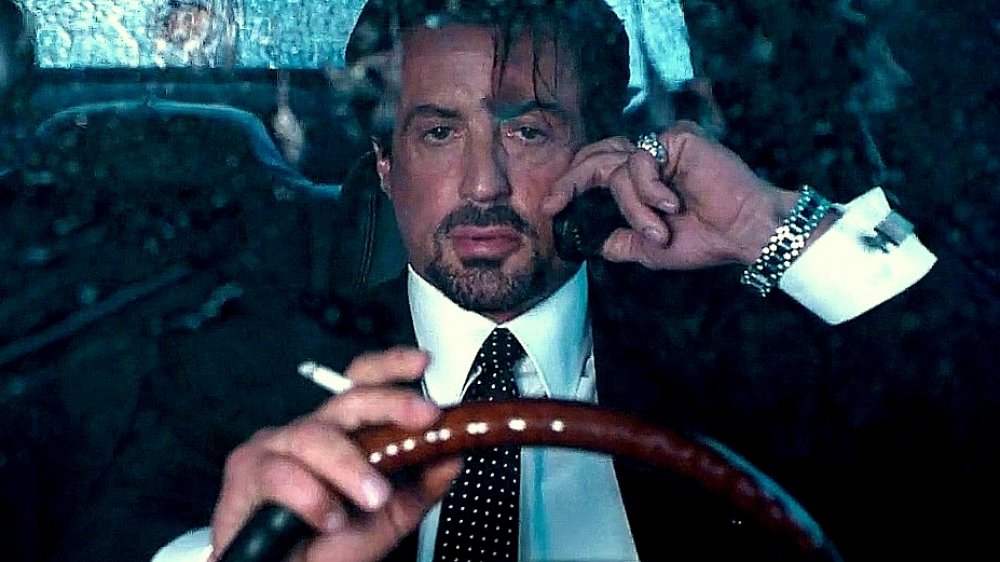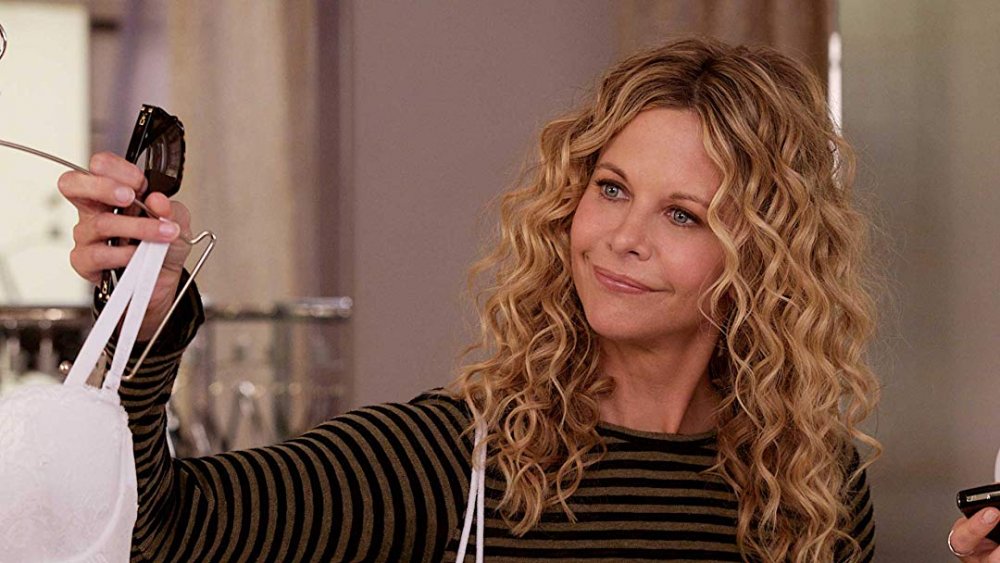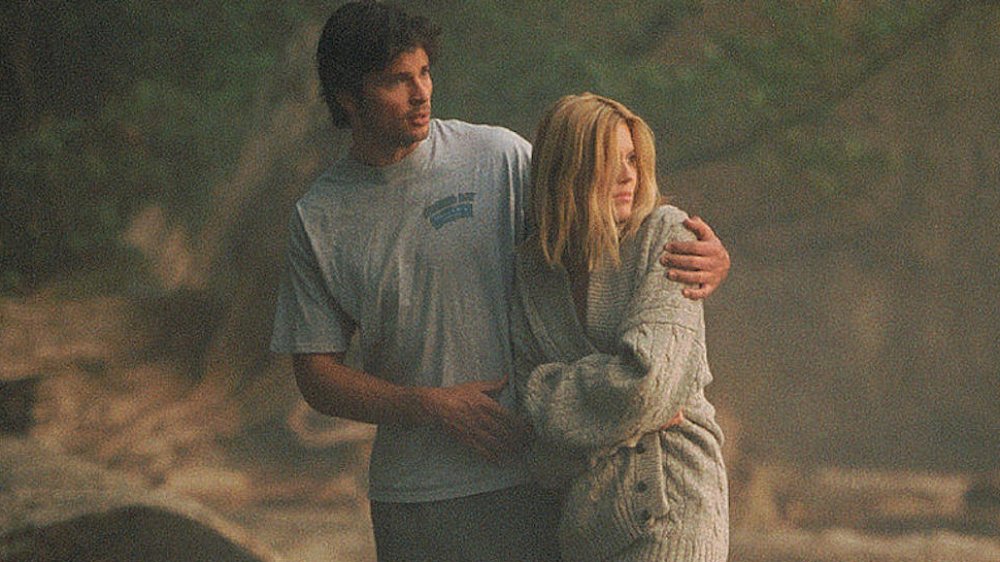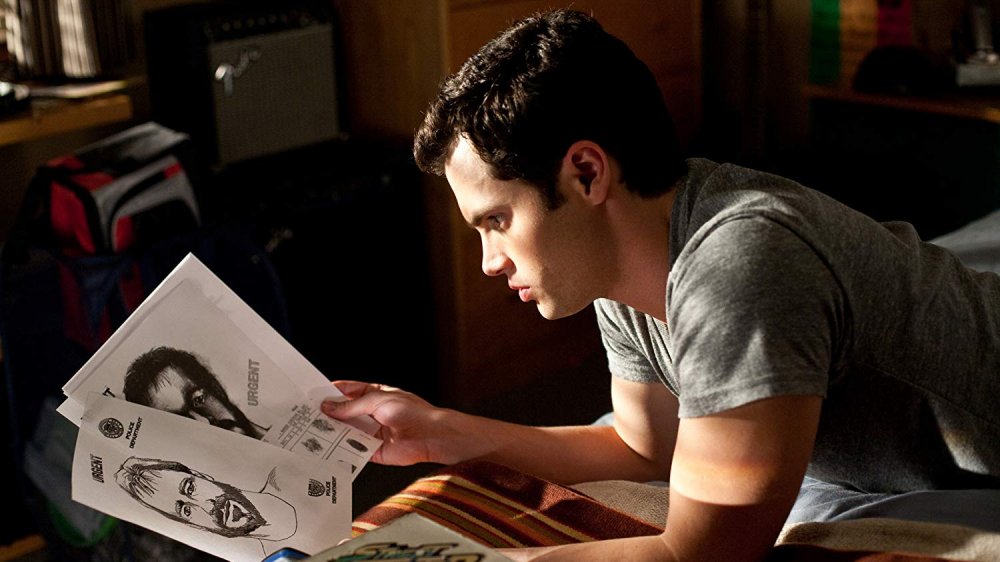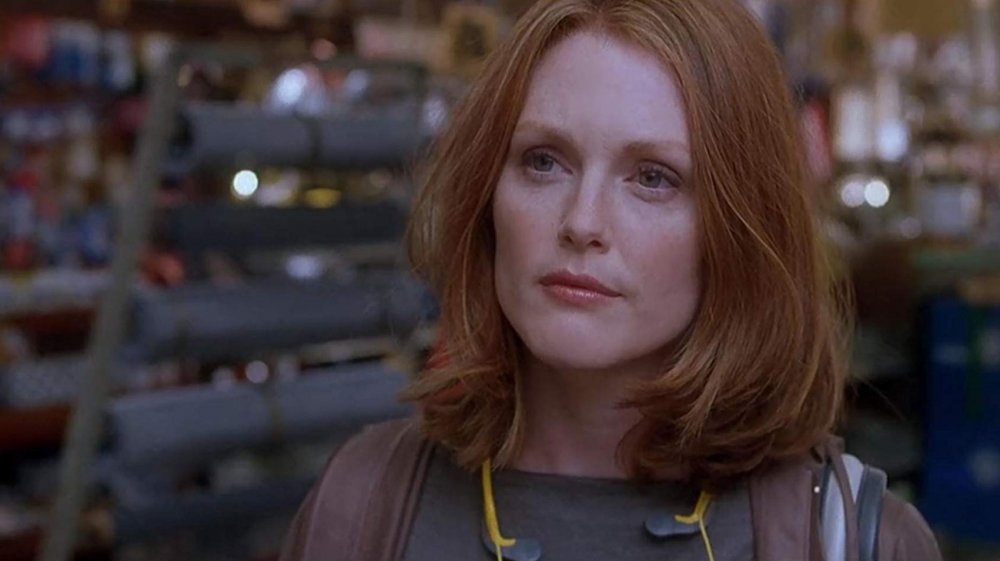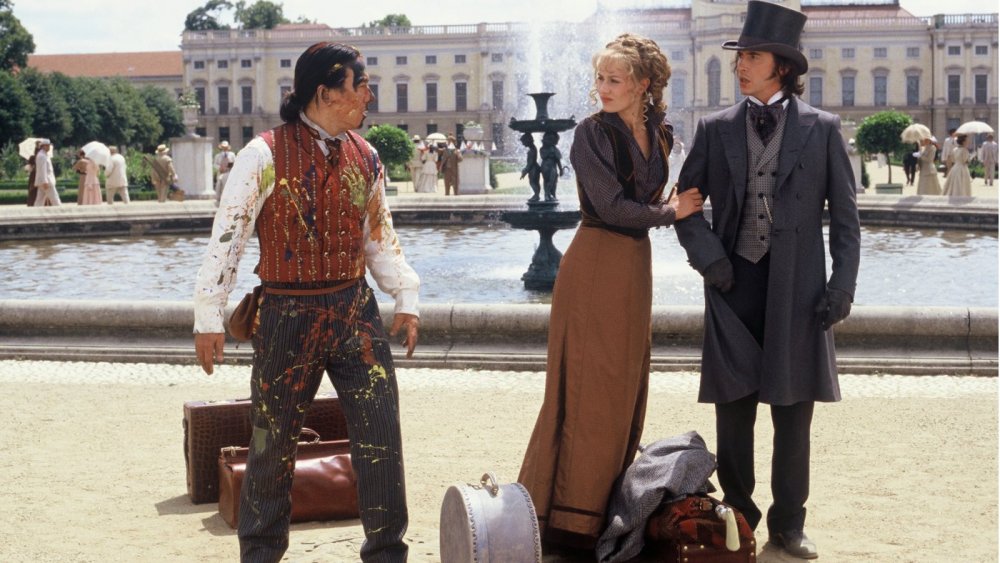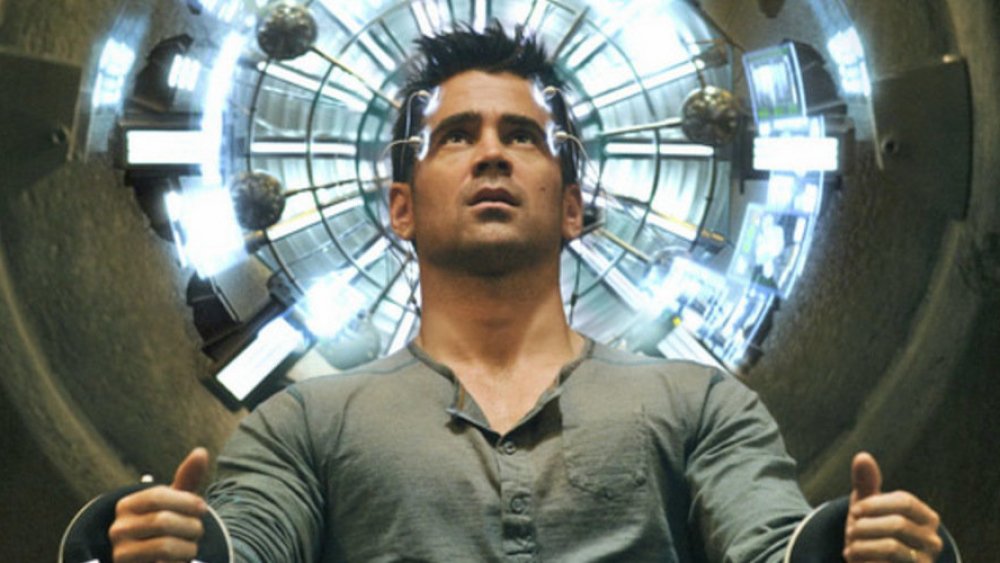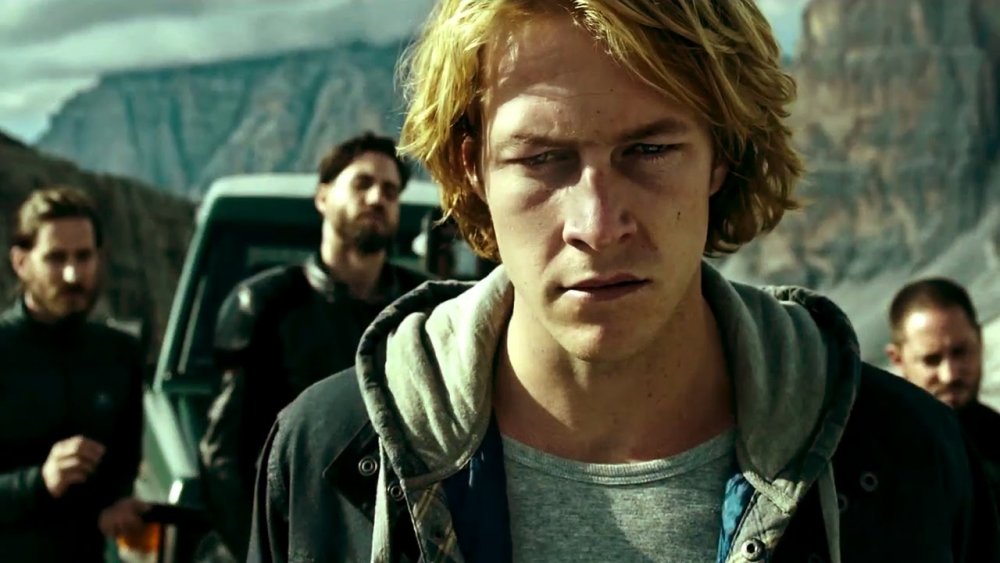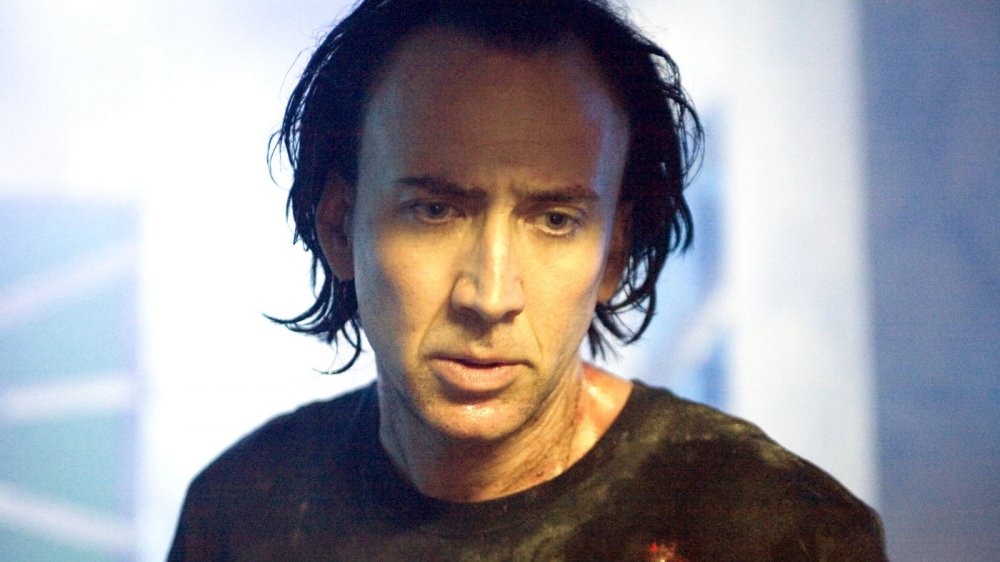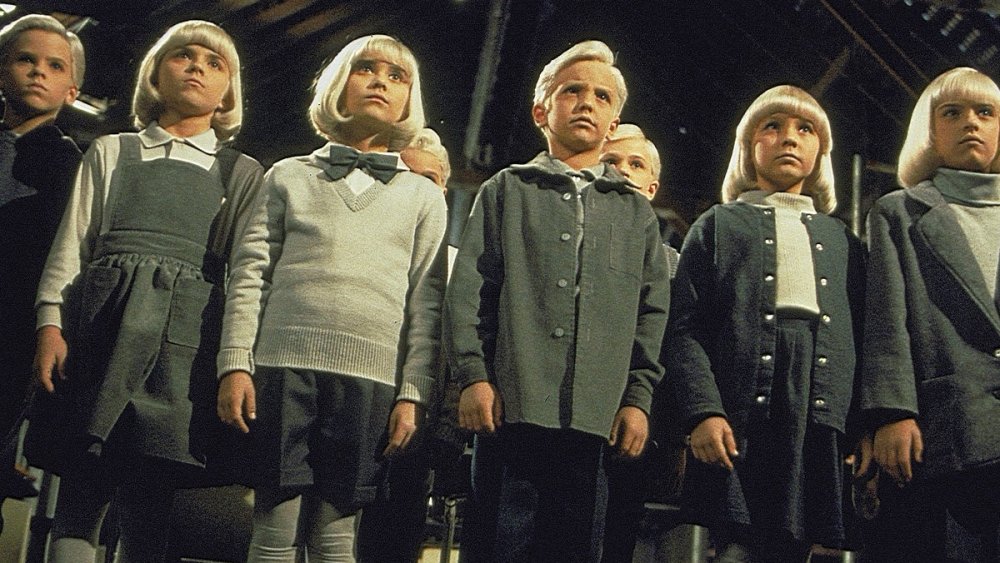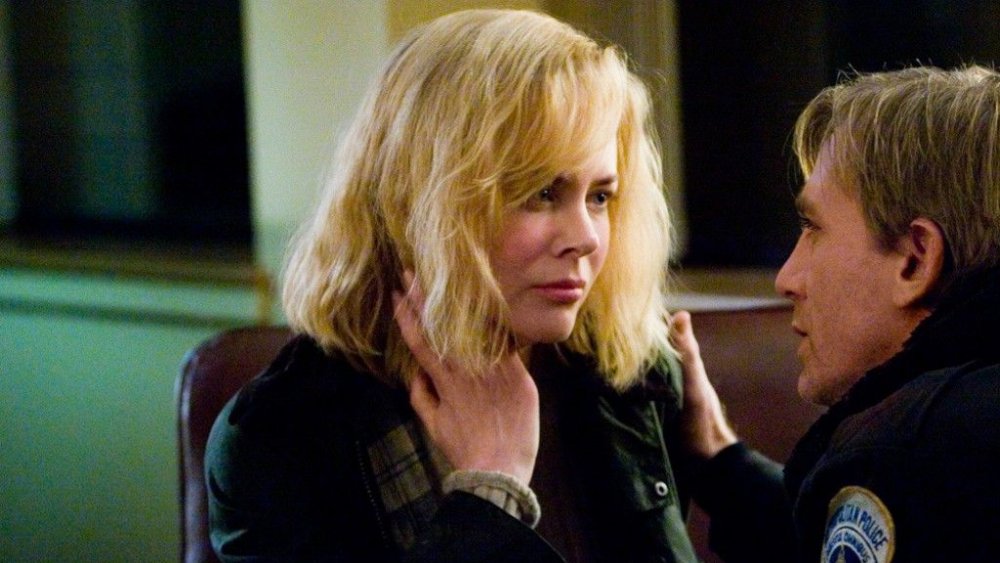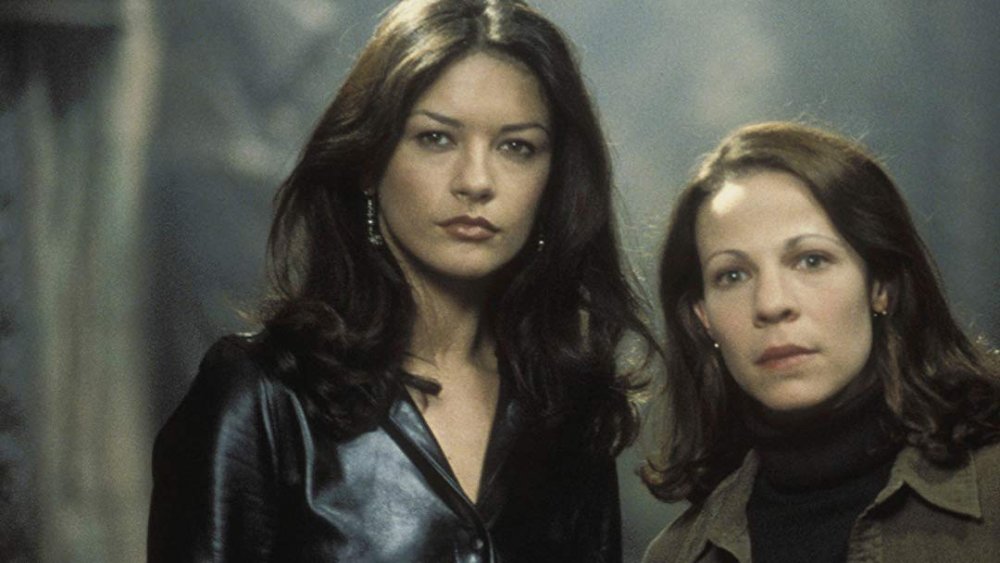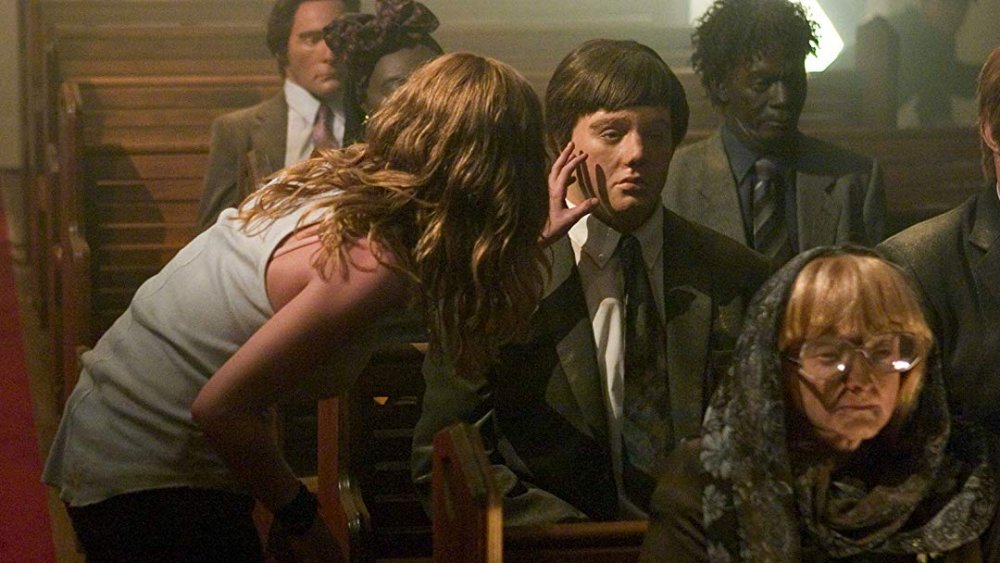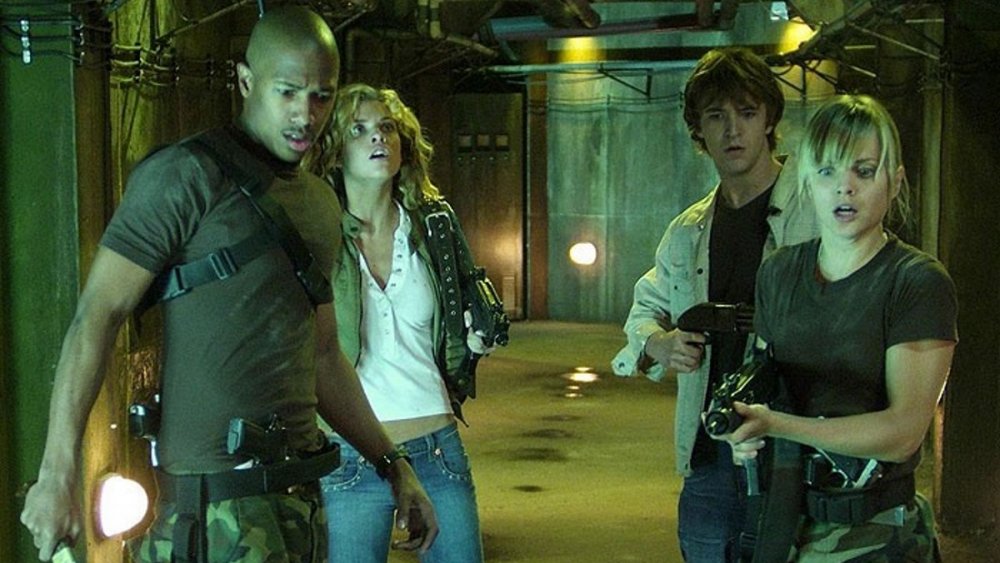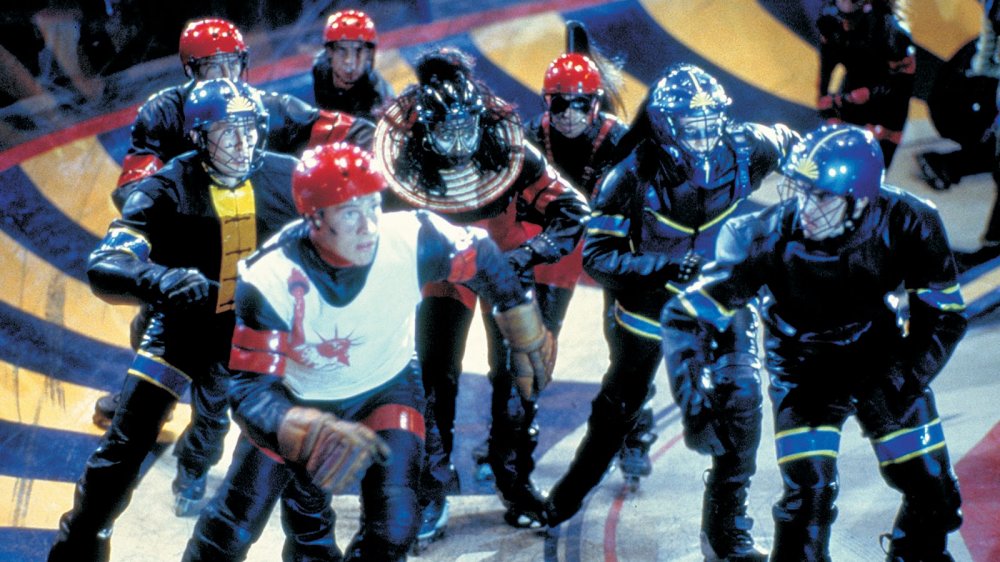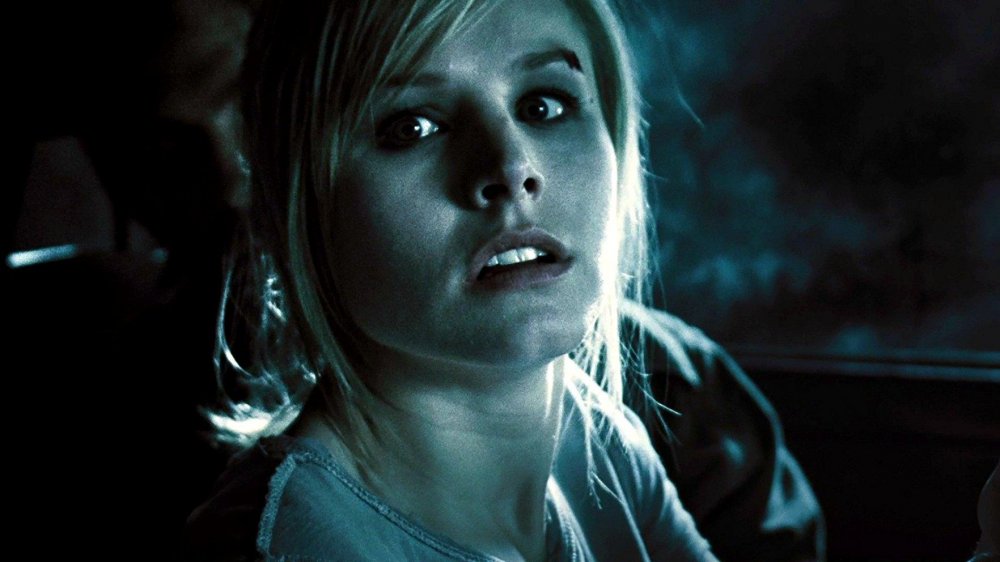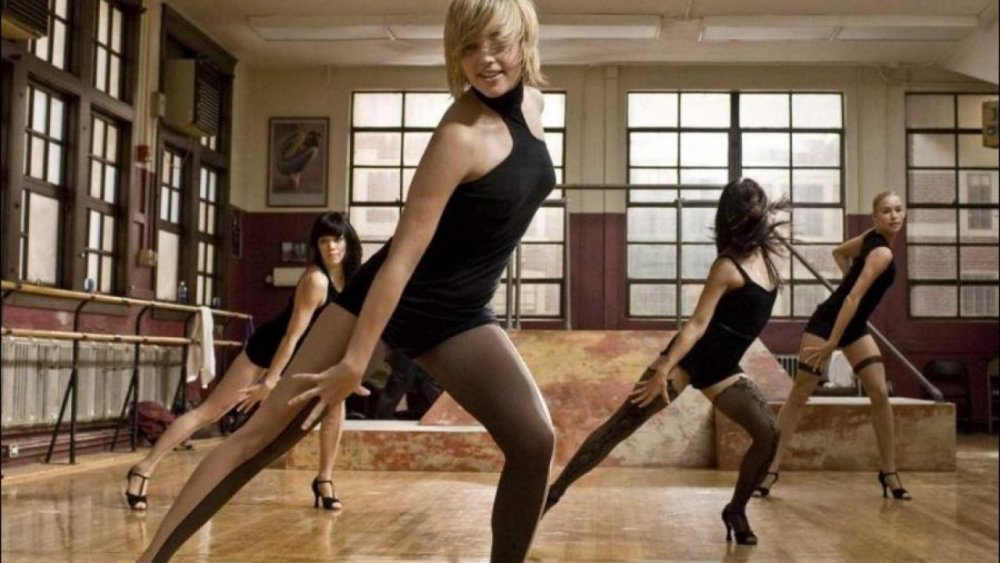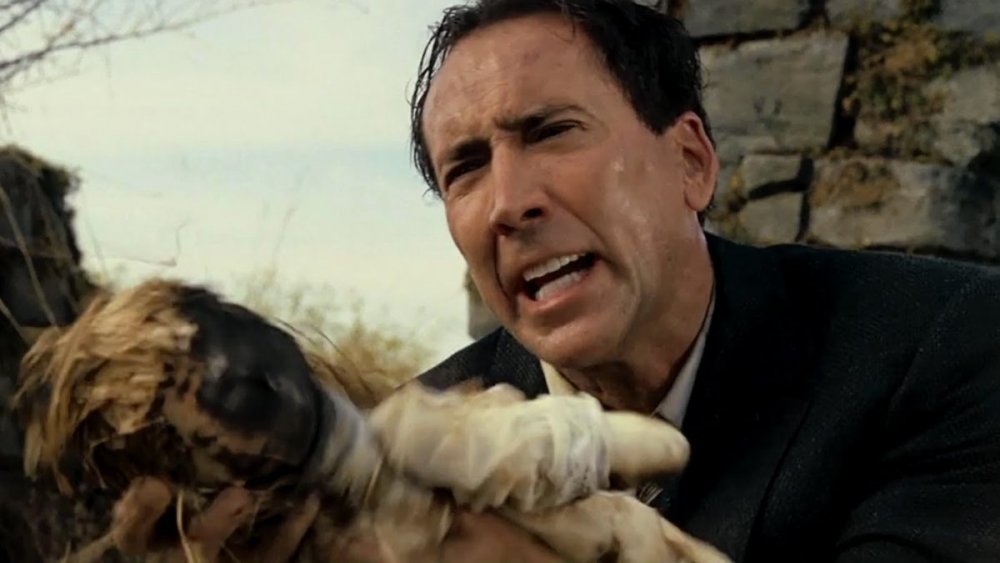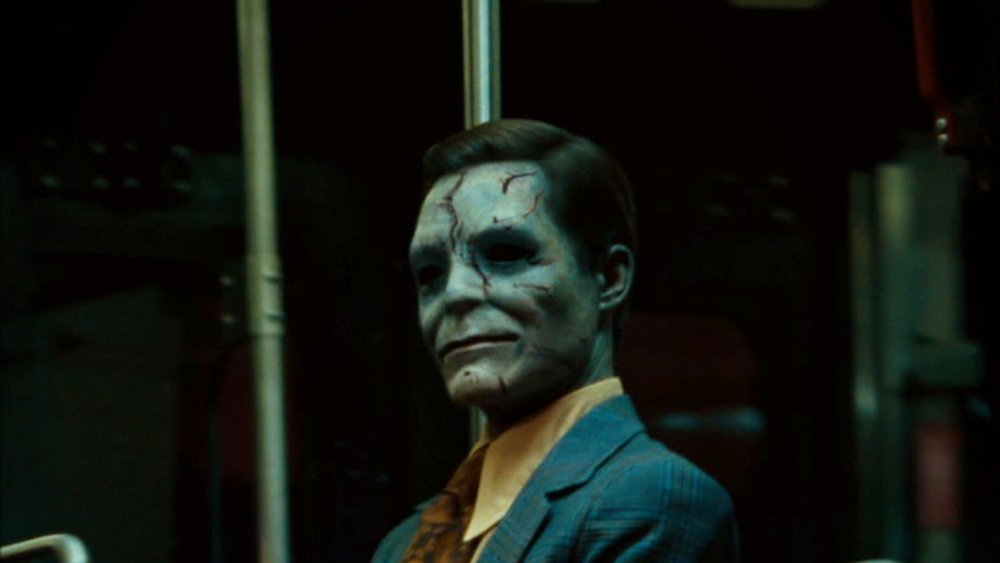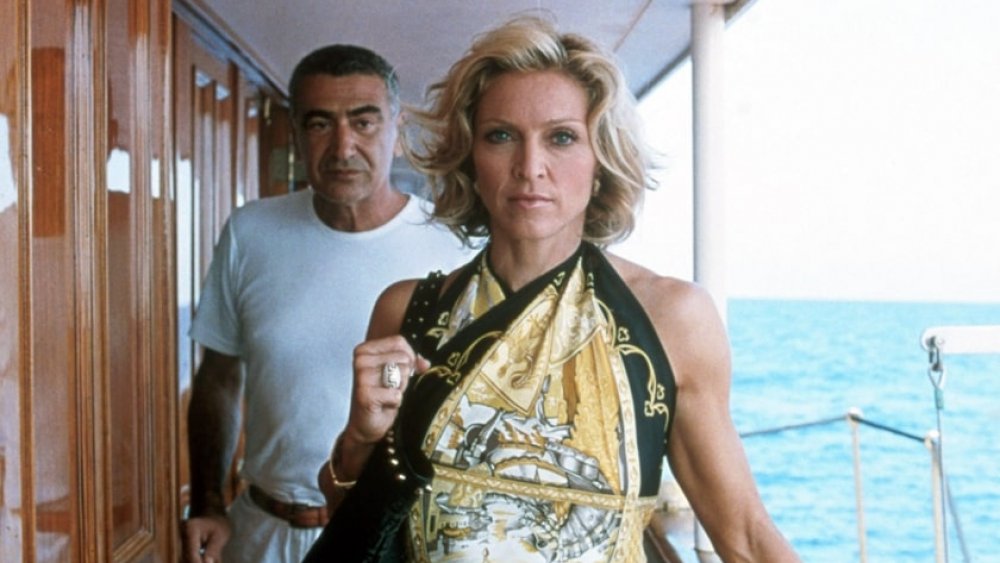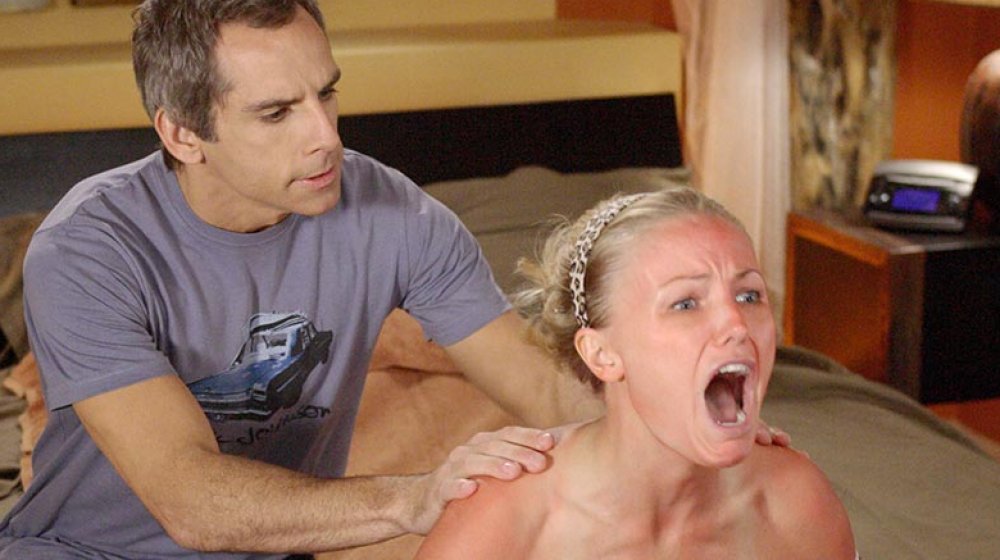The Worst Movie Remakes Of All Time
Remakes get a bad reputation in the world of cinema, but it's not always deserved. Sometimes, remakes really do improve upon their source material — just look at positively received remakes like The Fly, Little Shop of Horrors, and the many iterations of A Star is Born. There are instances when a director just doesn't quite do a story justice when they bring it to the big screen, and it takes a new cast and crew to polish it up.
But remakes always present a certain challenge — you have to appeal to fans of the original film while impressing a new crop of critics and drawing in fans who may be unfamiliar with the original. It's a tough balancing act, and it's easy to screw it up. And when a remake flops, you can generally expect fans and critics to be exceptionally harsh — there's a common sentiment that a good film or franchise can be tainted by a shoddy remake. Here is a round-up of some of the worst remakes of all time, proving that sometimes, attempting to improve a decent film can result in nothing but a box office flop.
Get Carter (2000)
In the 1971 British crime film Get Carter, London gangster Jack Carter returns to his hometown after the death of his brother. When he suspects foul play, he decides to dig deeper and find out who was really responsible. As he delves back into the city's world of organized crime, tensions escalate and violent conflict ensues.
The 2000 remake of Get Carter, starring Sylvester Stallone, was certainly not a bright spot in Stallone's career. This time, the story was set in America, with Carter a mob enforcer living in Las Vegas who returns home to Seattle after his brother's death. But it wasn't necessarily the change in setting that disappointed critics, although it did give the film a different feel — it was the fact that the plot seemed rather formulaic and contrived in comparison to the original, despite the fact that it should have been a suspenseful mystery. "Carter, who goes to Seattle to hunt down his brother's killer, may have entered a labyrinth of evil," wrote Owen Gleiberman for Entertainment Weekly, "but his response to it — revenge shorn of all vulnerability or nuance — is as hollow as it is monolithic."
The Women (2008)
The 1939 comedy film The Women featured an all-female cast, and while one of the main themes of the film is the characters' relationships with men, not a single man is seen throughout the entire film — even their pets are female.
With a push for more female representation in movies, you would think that remaking The Women presented a great opportunity — an update of the film for modern audiences would likely be a hit. But the 2008 remake left much to be desired — it wasn't up to the same artistic standard as the original. It wasn't quite as witty or charming, and while the cast featured talented leads like Carrie Fisher and Meg Ryan, their skills were largely wasted. Comparing the film to the original, Linda Barnard wrote for The Star, "What was then snappy dialogue from meowing madams acting out a morality play on everything that stinks about haute society now flaccidly flaps, lost in translation from old world to new."
The Fog (2005)
In John Carpenter's 1980 cult classic The Fog, a mysterious fog covers a California town, bringing the ghosts of dead sailors that terrorize the residents. The concept could have been corny, but the well-made film's slow build to scary moments kept audiences hooked. It seemed like a film that could benefit from a remake with updated special effects, but as this 2005 effort shows, it's all too easy to completely botch the plot.
Although Carpenter did produce the remake, it didn't strike a chord with critics. The scares just didn't conjure up real fear, and the ghosts didn't come across as threatening or intimidating. And if a horror film isn't genuinely scary, it just feels boring and muddled — there's little reason to watch. Writing for ScreenCrush, critic Matt Singer questioned if it was "one of the worst movies ever made." In his review, he joked, "This movie's not even that foggy! The clouds in two-thirds of this movie are so sparse they wouldn't even warrant a push notification from your phone's weather app."
The Stepfather (2009)
The Stepfather is a 1987 slasher that's scary enough to make you feel a bit wary of any kind stranger you meet. The film is about a murderer who kills his family, changes his identity, and then marries into another family so he can repeat the process. His stepdaughter becomes suspicious of him, but can she prove who he is in time to save her family?
The film falls somewhere between horror, crime thriller, and black comedy, and the plot is interesting enough to draw in fans of various genres and carry audiences to a satisfying conclusion. But the 2009 remake of The Stepfather failed to achieve the same. The tension just isn't there, the plot holes are distracting, and the climax of the film ties up everything a little too neatly, with a predictable series of events leading up the final moments. For the AV Club, Scott Tobias wrote, "Even by horror-remake standards, The Stepfather sets the bar for pointlessness."
Psycho (1998)
Remaking a classic horror film is no easy task for a director. The 1998 remake of Psycho made that clear. The original 1960 Psycho was chilling, and fans weren't exactly begging for a do-over — it's considered one of Alfred Hitchcock's best films, and just hearing Norman Bates' voice is still enough to make your skin crawl.
The remake didn't take much artistic license, opting instead for a shot-for-shot copy of the original. While watching it, it's hard not to ask why it was even worth shooting a remake if the film would barely deviate from the source material. Even most of the script and musical score was extremely similar. To top it all off, the film was nominated for a grand total of three Golden Raspberry Awards, and won for Worst Remake and Worst Director. "Even with Hitchcock's shot list... Van Sant can't come up with anything more than a wan tribute to the master, proving it takes more than a good storyboard to make a film work," Sean Axmaker wrote for Nitrate Online Review.
Around the World in 80 Days (2004)
Around the World in 80 Days, originally released in 1956, is an epic adventure based on the novel of the same name by Jules Verne that ended up winning five Academy Awards, including the award for Best Picture. The plot's pretty simple: Phileas Fogg makes a bet that he can get around the world in a mere eighty days, and he sets off on a race throughout the globe.
A tale like this seems timeless — yes, it would be incredibly easy to get around the world in just a couple of days now, but the story could still resonate with modern audiences. However, the 2004 remake didn't take audiences on the same exciting adventure as the original. Instead, it barely followed the plot of Verne's novel, and it was nominated for Worst Remake at the Razzies — and it ultimately won Most Unwelcome Remake at The Stinkers Bad Movie Awards. Marty Mapes summed it up for Movie Habit: "Around the World in 80 Days is the kind of movie you should see if you're looking for an excuse to sit in an air-conditioned theater for two hours, and you've already seen all the good movies."
Total Recall (2012)
Total Recall, a fascinating science fiction film released in 1990, follows construction worker Douglas Quaid, who begins having disturbing dreams about life on Mars. He gets a memory chip implanted that will give him a virtual reality experience of working as a secret agent on the planet. But as the film goes on, the line between fact and fiction becomes blurred, and he struggles to figure out who he really is — and what he has really done on Mars.
Here's where the 2012 remake went completely wrong: it isn't even set on Mars. Instead, it takes place on a future, dystopian Earth. Sure, that concept could have worked well, but this version of Total Recall fell flat in other aspects. The action sequences were the only real bright spot of the film — everything in between dragged on with little excitement. "Whilst the action is grand in scope — and certainly high in production values — it somehow lacks any tangible sense of tension or drama," wrote Joseph Walsh for CineVue.
Point Break (2015)
In the 1991 film Point Break, Keanu Reeves plays an undercover FBI agent who has to investigate and infiltrate a group of bank robbers — who also happen to be great surfers. This is definitely not your average crime thriller.
The premise of Point Break may have seemed clunky, but what made it a cult favorite was the fact that nothing about the film really should have worked together — yet somehow, the ridiculous plot threads proved entertaining. How do you recapture the magic of a film with an unexpected cult following? Well, if the remake of Point Break is any indication, it might not be possible.
The 2015 Point Break does feature some visually stunning action scenes, but other than that, it falls flat. In a review for Times of India, Reagan Gavin Rasquinha summed up the film's fatal flaw: "Point Break comes across as a string of admittedly amazing action sequences and sports feats with the rest of the film haphazardly built up around it."
Bangkok Dangerous (2008)
Nicolas Cage has a track record of starring in films that prove underwhelming for critics, and Bangkok Dangerous definitely falls into that category. The original Bangkok Dangerous is a Thai crime thriller about Kong, a gunman who can neither hear nor speak. He works as an assassin for hire, struggles to find real meaning in life, and eventually meets a tragic end. It's an intense film, packed with action and emotional scenes. Cage's version, however, couldn't hold a candle to the original — despite the fact that it was made by the same directors, the Pang brothers.
In the 2008 remake of Bangkok Dangerous, several key details are changed. Cage plays the protagonist, Joe, who isn't deaf or mute. The cinematography is visually confusing at times, and the idea of a hitman who eventually gains a conscience feels cliche. As Scott Nash remarked in a review for Three Movie Buffs, "The burnt out assassin shtick is old and tired."
Village of the Damned (1995)
In the 1960 British horror movie Village of the Damned, one morning, every young woman in a small town wakes up pregnant and eventually gives birth to extremely intelligent and frighteningly powerful children with abilities that cannot be explained.
Remaking a film like Village of the Damned is risky. Done poorly, the plot about a village full of alien spawn could come across as silly and flimsy rather than scary — and unfortunately, that's exactly what happened in the 1995 remake. Director John Carpenter missed the mark this time around — it couldn't live up to the success of some of his other films, like Halloween. The pacing is disjointed and incoherent at times, and while the original was praised for its genuinely suspenseful atmosphere, the remake was panned for its lack of real tension. Writing for SF Gate, critic Peter Stack wrote the film off as a "trip to a village of the darned tedious."
Ben-Hur (2016)
The 1959 historical drama Ben-Hur is an undisputed classic that won 11 Academy Awards. Interestingly enough, this version of Ben-Hur was actually a remake, but it definitely improved on the original 1925 silent film, Ben-Hur: A Tale of the Christ. It's got plenty of action, romance, high-stakes drama, and a famous chariot race that has impressed audiences for decades. It was difficult to see how a remake could have outdone the 1959 version — but that didn't stop Paramount from trying.
What could have been an incredible historical epic with updated special effects turned out to be a box office bomb. The aesthetics were downgraded by haphazard editing and lackluster CGI, and aside from a few exciting action scenes, little about the film stood out. "A thrill ride in parts, as long as you can forgive the hokiness, wooden dialogue, and long-slog running time," Alison Rowat wrote for The Herald. Moral of the story? Some classic films should just be left alone.
The Invasion (2007)
Compared to the horror films of today, the special effects in the original 1956 Invasion of the Body Snatchers left something to be desired, but it's still regarded as a classic. In this sci-fi horror movie, alien spores grow into seed pods that can produce physical replacements of human beings — without any shred of human emotions. A critically and commercially successful remake followed in 1978, and another retelling, titled Body Snatchers, was released in 1993.
In 2007, another version of the story was released, this time titled The Invasion. Rather than creating a straight remake, the writers tried to take it in a different direction and make it more contemporary and political. The result? A film that was widely criticized for an inconsistent narrative, one whose deeper themes were subsequently lost. "It falls far short as an effective sci-fi thriller, not to mention the brainy political allegory it's determined to be," wrote Dana Stevens for Slate.
The Haunting (1999)
Based on the 1959 novel The Haunting of Hill House, 1963's The Haunting follows a group of people who are invited by a paranormal investigator to find out what's going on in a supposedly haunted house. The dark, shadowy sets make it feel like evil is genuinely lurking around every corner, and the realization that the house is genuinely haunted makes the characters feel like their grip on reality is slipping.
The 1999 remake The Haunting could have been better than a standard haunted house film, yet it never measures up. The participants are lured to the house under the assumption that they're taking part in an insomnia study. But once the researchers leave, the house comes alive. It's still an intriguing setup, but the mediocre script doesn't exactly lend itself to great acting; moments meant to be dramatic and frightening come across as unintentionally funny. "Once the screaming begins, so will your laughing," Carlo Cavagna wrote for About Film. "The Haunting is so absurd, you might find it to be reasonably enjoyable escapism, depending on your appreciation for camp."
House of Wax (2005)
1953's House of Wax was a 3-D horror hit in which a sculptor stocks his wax museum by killing people and coating their corpses with wax. It was actually a remake of an earlier film, the 1933 Mystery of the Wax Museum. Audiences were enthusiastic about this version, and it did well at the box office.
In 2005, a modern-day version titled House of Wax was released, but the plot was quite different — less like a real thriller and more of a predictable, shrill teen slasher. There's nothing wrong with a cheesy slasher — but compared to the impact of the 1953 version, this retelling was shallow and reliant on cheap scares. Granted, this was probably obvious based on the casting alone: with Paris Hilton in a supporting role, it was unlikely to impress any critics. As Maitland McDonagh wrote for TV Guide, "It delivers some bracingly nasty gore scenes, but there's no spark left in the run-scream-repeat formula."
Day of the Dead (2008)
The 1985 zombie film Day of the Dead follows a group of scientists and soldiers who live in a bunker in the aftermath of a zombie invasion. Several zombies are kept captive for the purpose of research. Predictably, this arrangement is unstable, and a conflict breaks out that threatens the very survival of the human race.
Day of the Dead is a bloody film, but it balances the violence with a genuinely thoughtful critique of society and the breakdown of human communication in the modern era. However, the 2008 remake forsakes any attempt to bring a real message to the audience in favor of gore and guts. There's no real commentary on the state of humanity, the special effects look cheap, and the zombies are so intelligent and agile that they operate less like zombies and more like evil human beings with superpowers. "Like infected zombie areas put under quarantine, I would lock this film away in a box and leave it there for good," Jordan Snowden quipped in a review for Pittsburgh City Paper.
Mr. Deeds (2002)
Adam Sandler is more than capable of giving a great performance when he wants to — although he has a reputation for churning out cringe-worthy comedies, films like The Wedding Singer and Uncut Gems prove that he's a better actor than many give him credit for. However, his 2002 remake of Frank Capra's 1936 film Mr. Deeds Goes to Town, titled Mr. Deeds, doesn't rank amongst his best work. In Mr. Deeds Goes to Town, Longfellow Deeds makes a living by juggling odd jobs during the Great Depression, until he suddenly inherits $20 million from his late uncle. He falls in love with Louise "Babe" Bennett, and an unexpected love story unfolds.
The plot of the 2002 remake is similar, but the jokes are grating, the characters are bland and irritating, and the entire narrative is dumbed down to the point where it's practically insulting to the audience and Capra's memory. In a review for the Seattle Times, Moira Macdonald wrote, "Mr. Deeds is supposed to be a celebration of the goodness of regular people... but really it's nothing more than a money maker for the filmmakers and a pointless star vehicle for Sandler."
Rollerball (2002)
The 1975 film Rollerball practically inhabits its own genre — it falls somewhere between sci-fi and sports movie. The futuristic story centers on star rollerball player Jonathan, the most famous and talented guy in the game, whose success is used against him when the powers that be decide that the rules of the sport should change to ensure that he is forced out — by killing him, if necessary. Jonathan is supposed to become an example, proving that man can only succeed through violence and uninhibited individualism.
The 2002 Rollerball remake doesn't deliver in terms of relevant social commentary. It takes place in the present instead of the future, and it's mainly focused on action sequences, ignoring the political undertones that made the original worth watching. The narrative is choppy, the characters are underdeveloped in favor of spotlighting violent Rollerball games, and the dialogue isn't exactly riveting.
Pulse (2006)
In 2006, the Japanese horror film Kairo was remade for American audiences as Pulse. In Kairo, spirits manage to find their way into our world through the internet, causing strange and horrifying events to occur. The film features two parallel narratives that show characters dealing with the consequences of this paranormal invasion.
In the remake, the unique dual narrative approach was scrapped. The premise was similar enough — ghosts make their way into the world of the living through a portal opened up by the internet — but everything that made the original a cult favorite in Japan was missing. The film relies on grotesque imagery to get its points across, but those cheap thrills aren't enough for a film that fails to delve deeper into any meaningful themes. Writing for Austin Chronicle, critic Mark Savlov referred to the remake as a "curiously dull Americanization of one of the finest examples of subtle, moody J-horror out there."
Fame (2009)
The 1980 film Fame follows a group of high school students after they gain acceptance to the prestigious High School of Performing Arts in New York City. As they study their respective crafts, they face difficult obstacles in the classroom, on stage, and in their personal lives. There are moments that slip into melodrama, but overall, the characters are relatable and sympathetic, and the musical numbers were a hit.
The 2009 remake of Fame just doesn't have the same atmosphere. It's too slick and polished, like it was intended to be an after-school special rather than a film about authentic, complex, and ambitious characters. It lacks the original's gritty edge, seeming to take cues from High School Musical and Glee instead. Critic Roger Ebert gave the film two stars, writing, "The new Fame is a sad reflection of the new Hollywood, where material is sanitized and dumbed down for a hypothetical teen market that is way too sophisticated for it."
The Wicker Man (2006)
The 1973 British horror film The Wicker Man explores intriguing religious themes as devout Christian police sergeant Neil Howie investigates an isolated island cult. He travels to the island of Summerisle to find a missing young girl, Rowan Morrison, who he believes has been taken to the island based on the contents of an anonymous letter. He worries that she's intended to be a human sacrifice for the cult, but what they have planned for Howie is even more terrifying.
The Nicolas Cage-led 2006 remake of The Wicker Man couldn't help but fall short of the eerie expectations set by the original. Moments intended to be harrowing are instead so absurd that they came across as funny, and the genuinely unsettling atmosphere in the original film is completely absent. When a horror movie feels more like an ill-conceived comedy, it's hard to come away without feeling like everyone involved was phoning it in.
One Missed Call (2008)
The 2008 American remake of the Japanese film One Missed Call has the distinction of being one of the few films to score a whopping zero percent on the Tomatometer. The original One Missed Call wasn't exactly a classic — the plot, about people receiving voicemails from their future selves dying, was quite similar to other popular horror films like The Ring. This meant there was a real opportunity for the remake to outshine the original — and it completely missed the mark.
It just wasn't scary enough for the critics, and for a film that should have been gripping and suspenseful, the plot was actually rather boring. Even if you don't speak Japanese, don't subject yourself to watching this remake — unless, of course, you happen to find poorly reviewed horror films entertaining in a "so bad it's good" way. Instead, just turn on the original and read the subtitles.
Swept Away (2002)
The Italian film Swept Away follows the story of Raffaela, an entitled, wealthy woman who ends up stranded with Gennarino, a crew member from her yacht — and to make matters more interesting, he also happens to be a communist. But when they end up shipwrecked on a desert island, she's no longer in control, and the two end up engaged in an unexpected love affair.
Sometimes, remaking a foreign film for a different market means that the story will get butchered in the process — and that's exactly what happened with the American remake of Swept Away. The leads have little chemistry, making it all but impossible to buy their romance. In a review for SF Gate, Mick LaSalle wrote, "Even camp status eludes this tepid and misguided picture... The movie is not just a weak effort, but a big, fat mistake."
The Heartbreak Kid (2007)
1972's The Heartbreak Kid is a different kind of romantic comedy. Self-absorbed Lenny is married to clingy Lila, and on their honeymoon, he ditches her to pursue a manipulative college girl named Kelly. He impulsively divorces Lila and proposes to Kelly, but it becomes clear that her sole reason for marrying him is to rebel against her father. At their wedding, Lenny ends up ignored by almost everyone, including the bride, and this dark comedy ends on a depressing note.
The 2007 remake of The Heartbreak Kid, starring Ben Stiller, didn't push the boundaries of the genre like the original. The characters were nasty to the point of being unsympathetic and practically unredeemable, adding up to another stale rom-com that failed to differentiate itself from films with similar themes. In fact, Rolling Stone dubbed it the worst remake of the year. In a review for eFilmCritic, Peter Sobczynski described the film as "an ugly, hateful and deeply unfunny bit of hackwork."
